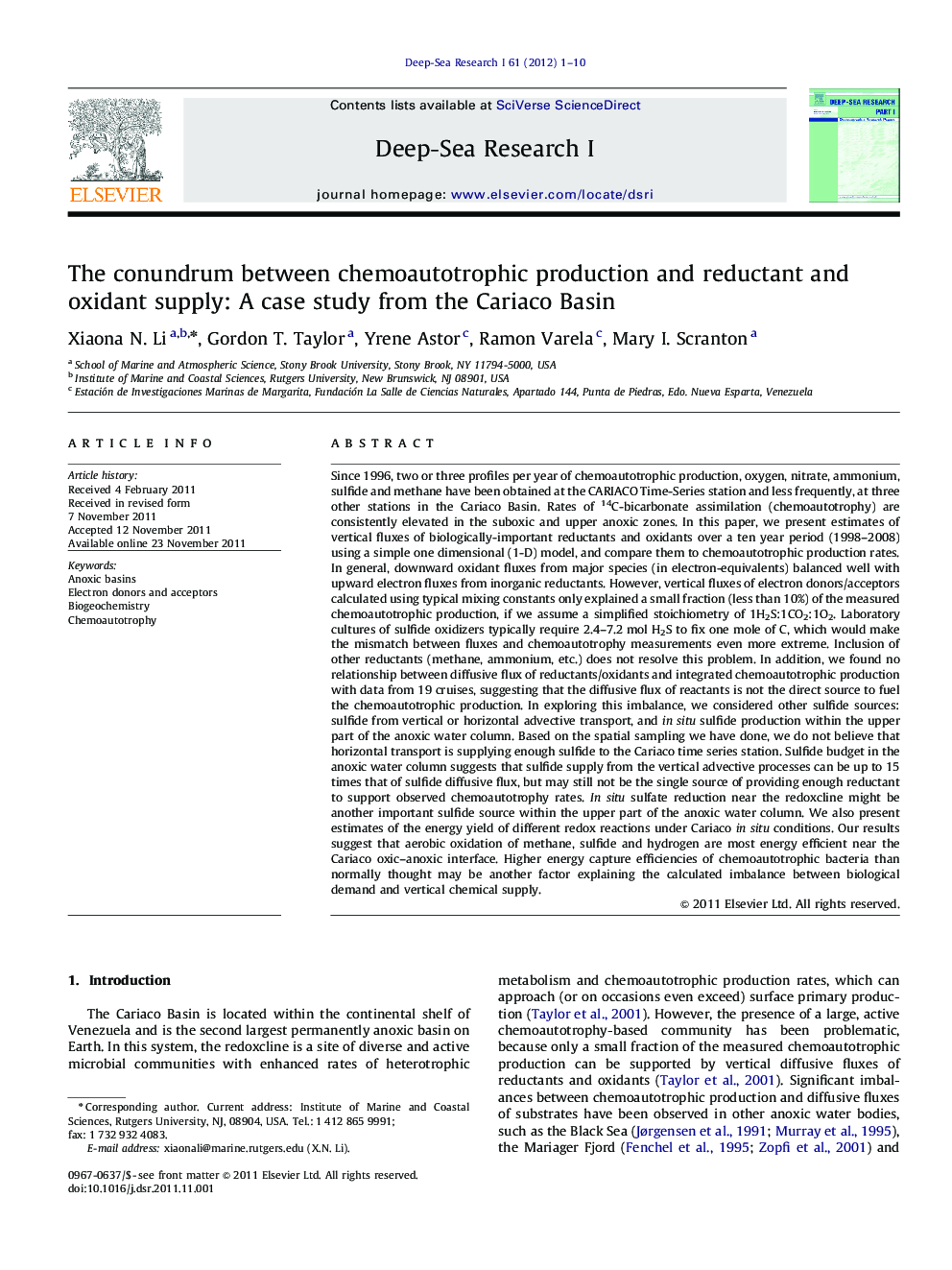| Article ID | Journal | Published Year | Pages | File Type |
|---|---|---|---|---|
| 4534740 | Deep Sea Research Part I: Oceanographic Research Papers | 2012 | 10 Pages |
Since 1996, two or three profiles per year of chemoautotrophic production, oxygen, nitrate, ammonium, sulfide and methane have been obtained at the CARIACO Time-Series station and less frequently, at three other stations in the Cariaco Basin. Rates of 14C-bicarbonate assimilation (chemoautotrophy) are consistently elevated in the suboxic and upper anoxic zones. In this paper, we present estimates of vertical fluxes of biologically-important reductants and oxidants over a ten year period (1998–2008) using a simple one dimensional (1-D) model, and compare them to chemoautotrophic production rates. In general, downward oxidant fluxes from major species (in electron-equivalents) balanced well with upward electron fluxes from inorganic reductants. However, vertical fluxes of electron donors/acceptors calculated using typical mixing constants only explained a small fraction (less than 10%) of the measured chemoautotrophic production, if we assume a simplified stoichiometry of 1H2S:1CO2:1O2. Laboratory cultures of sulfide oxidizers typically require 2.4–7.2 mol H2S to fix one mole of C, which would make the mismatch between fluxes and chemoautotrophy measurements even more extreme. Inclusion of other reductants (methane, ammonium, etc.) does not resolve this problem. In addition, we found no relationship between diffusive flux of reductants/oxidants and integrated chemoautotrophic production with data from 19 cruises, suggesting that the diffusive flux of reactants is not the direct source to fuel the chemoautotrophic production. In exploring this imbalance, we considered other sulfide sources: sulfide from vertical or horizontal advective transport, and in situ sulfide production within the upper part of the anoxic water column. Based on the spatial sampling we have done, we do not believe that horizontal transport is supplying enough sulfide to the Cariaco time series station. Sulfide budget in the anoxic water column suggests that sulfide supply from the vertical advective processes can be up to 15 times that of sulfide diffusive flux, but may still not be the single source of providing enough reductant to support observed chemoautotrophy rates. In situ sulfate reduction near the redoxcline might be another important sulfide source within the upper part of the anoxic water column. We also present estimates of the energy yield of different redox reactions under Cariaco in situ conditions. Our results suggest that aerobic oxidation of methane, sulfide and hydrogen are most energy efficient near the Cariaco oxic–anoxic interface. Higher energy capture efficiencies of chemoautotrophic bacteria than normally thought may be another factor explaining the calculated imbalance between biological demand and vertical chemical supply.
► A more comprehensive data set of oxidants, reductants over a long time and four stations. ► A more rigorous calculation of the issues associated with the flux (budgets, advection). ► Advective vertical sulfide flux could be a significant source of sulfide to the redoxcline. ► In situ sulfide production is another likely source to support the chemoautotrophic production.
